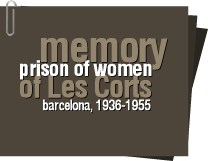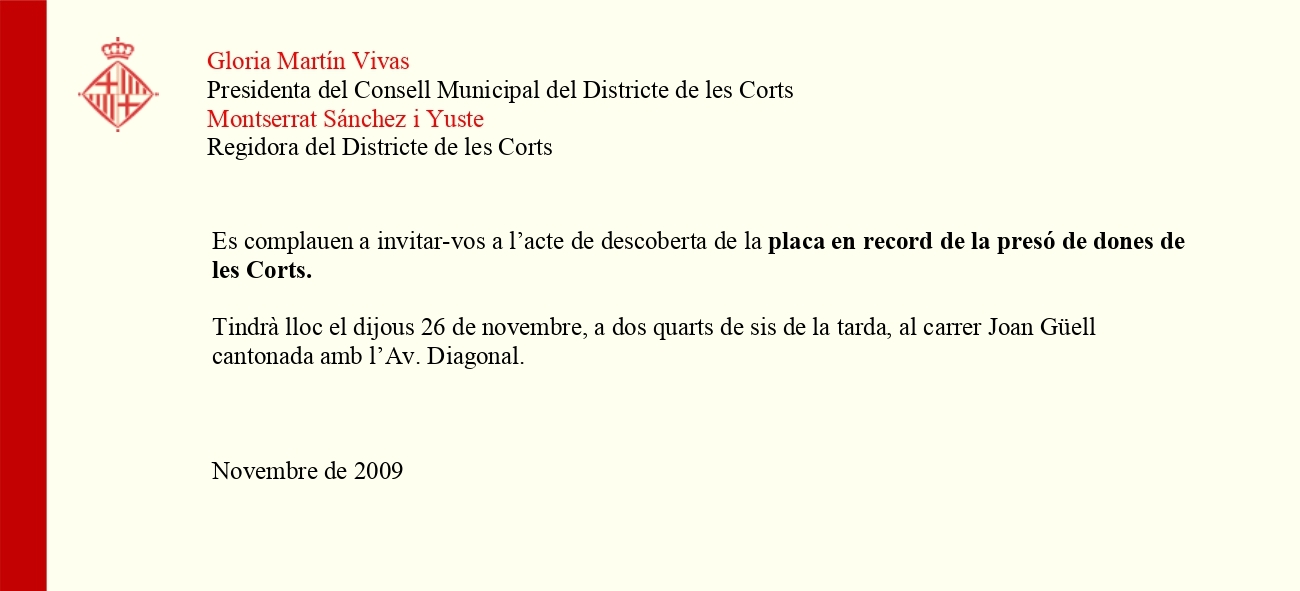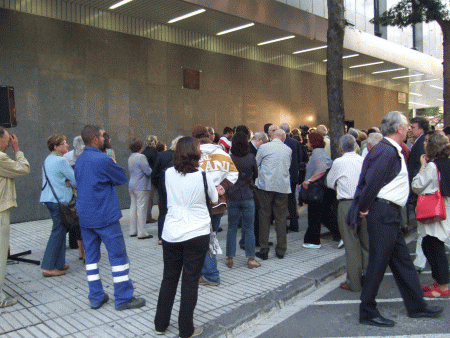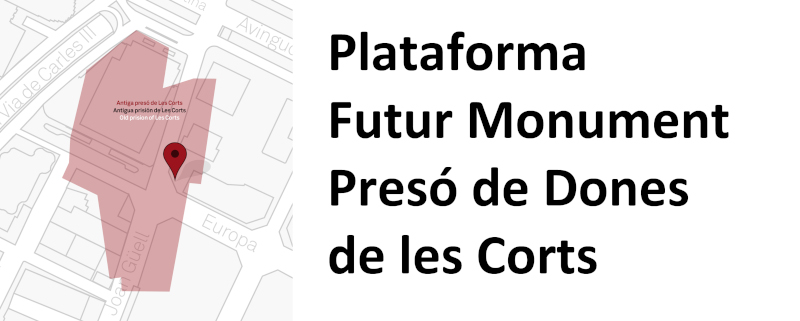The history of the installation of this plaque by the local authorities is an interesting one, because it exposes the virtues and the shortcomings that define a particular attitude on the part of the policymakers with regards to memory in an urban environment.
It all began when it was announced, on Thursday, 26 November 2009 that a plaque in memory of Les Corts Women’s Prison, was to be unveiled at 17:30, an event that was part of the International Day for the Elimination of Violence Against Women.
There were, however, two problems at the heart of this initiative: the first one was the one-sided nature of the event and the lack of coordination with other agencies, such as civic organisations at the local level or public institutions like the Memorial Democràtic of the Catalan Government, that had shown interest in marking the perimeter of the old prison.
On the other hand, there was no reference in the plaque to the dictatorship period (16 years), the longest in the life of the penal institution. It emerged that the choice of words in the plaque had been negotiated with the proprietors of the wall where the plaque was to be fitted –El Corte Inglés- who were keen not to “hurt anyone’s feelings”.
Thus, a powerful private agency was exerting from above their influence on an exercise of public memory.
These circumstances triggerd an avalanche of criticism–the Associació de Expresos Polítics (Association of Former Political Prisoners) published a statement, the heads of the Memorial Democràtic protested- enough to move the local authorities to quietly call off the event without further explanation.
It turned out to be a short-lived stratagem nonetheless, because about a year later, on the 1st of October 2010, the chief councillor proceeded to unveil the plaque, as part of the schedule of events that were part of the district’s major festivity. The original plaque, carrying the same text, was installed in the selected spot, but it was fitted so high up, that it was enormously difficult to see what had been written in it.
It is worthy of note the remark made by Llibertat Canela, daughter of Francisca Conejero, who entered Les Corts in April 1939. Llibertat, who had been long been requesting the installation of a plaque in honour of the former inmates said: “In my view, [the plaque] is small but, as they say, ‘it is better to have that, than nothing at all’.
The “small plaque” didn’t settle the question of the creation of a space dedicated to memory on the site of the former prison, even though the number of people attending the event made it quite clear there was great public demand for it.
Overtime we have come to understand that this initial plaque was an element of great significance for both what it is revealed, as well as for the facts that it conceals (an uncomfortable past). But, most of all, it shed light on how to approach these initiatives in the future: never from above, but at the grassroots level, combining the joint efforts of all parties involved to the highest degree possible.












